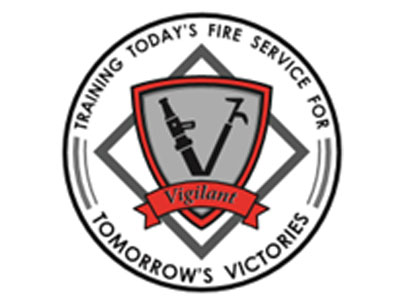 |
Exterior Fire Operations #1433 (Instructor Guide) |
1.00 |
This is the Instructor Guide for Lesson #1433 Exterior Fire Operations. This Instructor Guide is intended to prepare a lead instructor to deliver this course curriculum. Included in this guide is a review of lesson content and all required lesson materials. The lead instructor must pass this instructor guide course with a minimum score of 80% to receive the course materials for this lesson. |
 |
Employee Performance: Resolving Conflicts (Instructor Guide) |
1.50 |
Understanding the different styles of conflict resolution can help you identify the most appropriate process to use when addressing conflicts in the workplace. There are two general types of conflict resolution: indirect and direct.
In this course you will learn to: identify conflict resolution styles, resolve conflicts in the workplace, resolve team conflicts, and identify the communication skills required to resolve conflicts.
This Instructor's Edition of this course includes notes and suggestions to assist you in presenting the material, whether in an in-person classroom setting, or as an instructor-led online or distance-learning course. It also provides you with the answers to questions found in mid-lesson activities, as well as in the quiz that concludes the course. |
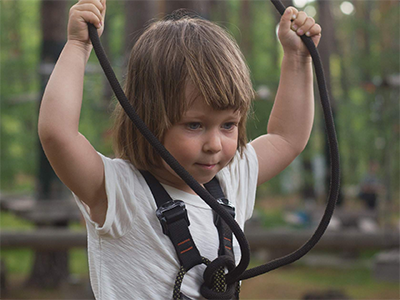 |
Assessing and Implementing a Safe Child Care Environment (CDA 1 & 5) |
2.00 |
Little explorers have big ambitions! As infants and toddlers embark on their journey of discovery, their safety becomes your top priority. This course equips you with the knowledge and tools to proactively create safe and stimulating environments. Learn to assess play spaces, evaluate activities, and refine existing practices, fostering a nurturing atmosphere where exploration and safety flourish hand-in-hand. |
 |
Mang Mountain Pit Viper |
1.00 |
In this module you will learn about an elusive, beautiful—and highly threatened—species from China. The Mang Mountain pitviper Protobothrops mangshanensis is just as important to the ecosystem as the giant panda—if a little less cuddly. |
 |
Galapagos Tortoises |
1.00 |
In this module you will explore the world of the Galápagos giant tortoises and their conservation. |
 |
Tasmanian Devil |
1.00 |
In this module, you’ll learn about the famous Tasmanian devil. These marsupials seem awfully cute to deserve the name “devil.” What’s the story behind the name? |
 |
Principles of Geriatric Pharmacotherapy |
1.00 |
Principles of Geriatric Pharmacotherapy, designed for health care professionals, teaches you how to identify treatment goals in older adults. Problems of aging are covered, such as the physiologic changes of the older population. Furthermore, this module identifies tools available to prevent inappropriate prescribing of medication, specifically highlighting the Medication Appropriateness Index, the Beers Criteria, and the STOPP/START Criteria. Some specific medications are discussed that require special care when prescribing them. Finally, you will learn how to ensure safe medication use in older adults. |
 |
Coping with Food Allergies in Child Care Spaces (CDA 1) |
2.00 |
A food allergy is a reaction within the body's immune system. It can be anywhere from mild to severe, and in some cases, it may be life-threatening. We must understand the symptoms and triggers of food allergies, the ways to prevent accidental exposure to prohibited foods, how to care for a child experiencing symptoms. This course is designed to be part of a Child Development Associate (CDA) Credential™ curriculum. It covers CDA Subject Area 1: Planning a Safe, Healthy Environment to Invite Learning. This course can also be taken as a stand-alone learning event, or as part of a broader early childhood education curriculum. |
 |
Incorporating Physical Activity Into Every Day (CDA 2) |
2.00 |
This course empowers childcare providers to overcome common challenges and integrate joyful physical activity into their daily routines. Discover practical, budget-friendly solutions to overcome barriers related to space, equipment, and even your expertise. Learn from a leading physical education expert and unlock a treasure trove of engaging activities that get kids moving, laughing, and learning. |
 |
Take it Outside!: The Importance of Outdoor Play (CDA 2) |
2.00 |
This course tackles the alarming decline in outdoor play and empowers you to reclaim its critical role in children's well-being. Explore research-backed evidence highlighting the benefits of outdoor time on healthy habits, physical development, and cognitive growth. Discover practical strategies to motivate children to embrace fresh air, movement, and connection with nature, fostering happier, healthier, and stronger youngsters who thrive in the great outdoors. |
 |
Collaborative Protocol Update - Patella Dislocation |
0.40 |
This course is designed to be taken by all BLS and ALS providers in the MLREMS region as an addition module for the collaborative protocol update.
A score of 70% is required to pass the exam which follows. |
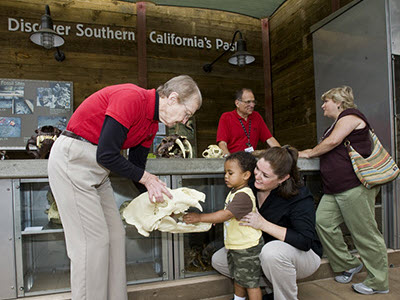 |
San Diego Zoo - Interpretation Basics: Module 1 |
2.50 |
An understanding of interpretation techniques is increasingly important for professionals and volunteers in zoos, aquariums, museums, and a variety of other tourism and hospitality organizations. This course will introduce the basics of interpretation, including the origins of interpretation, Tilden’s Six Principles of Interpretation, connecting tangibles with intangibles, and understanding visitors’ needs and motivations. |
 |
San Diego Zoo - Interpretation Basics: Module 2 |
2.50 |
Docents, guides, and interpreters who’ve successfully completed Interpretation Basics: Module I will further develop their interpretive skills by completing a second interpretation module. Interpretation Basics: Module II demonstrates the importance of purpose, message, and organization. Participants explore body language, word choice, question-and-response, transitions, and the use of props and biofacts. They identify techniques for enhancing audience participation and even practice handling challenging visitor situations. |
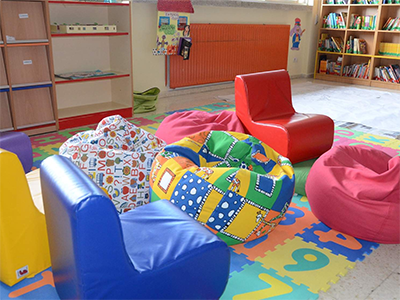 |
Management of Effective Preschool Child Care Environments (CDA 1) |
2.00 |
Unlocking preschool potential through nurturing environments: This course equips you with the knowledge and skills to create spaces that ignite young minds and support healthy development. Explore how to design engaging, child-centered environments and routines that adapt to individual needs, cultural influences, and developmental milestones. Learn to assess your current preschool environment and craft targeted strategies for improvement, fostering a dynamic learning space where every child thrives. |
 |
Managing Chronic Lower Back Pain in Older Adults |
0.50 |
You are here to gain a basic understanding of chiropractic management in older adults. There is a need for society to change its focus in the management of chronic pain syndromes from a “pain management” perspective to a “functional management” perspective. It’s important to recognize that pain and function do not necessarily equal each other. |
 |
Trauma-Informed Practices |
1.00 |
This course contains an overview of trauma: what it is, how to manage it, and what it looks like for students; a list of trauma-informed practices; and ways to ensure that you are implementing data-driven trauma-informed practices.
Trauma-Informed Practices is just one out of two courses in our trauma series. Be sure to check out the other course, Trauma and Its Impact on Education. |
 |
PPE Care and Maintenance #1931 (Instructor Guide) |
1.00 |
This training session is a PowerPoint presentation and skill demonstration. The presentation is an instructor lead discussion that reviews the importance of proper use and care of personal protective equipment for structural firefighting. The lesson reviews NFPA standards for structural firefighting PPE; 1971 and 1851. The lesson discusses the importance of proper care of the gear including selection, inspection, and storage. The procedure for inspection and cleaning of the PPE is reviewed including washing, drying, and repairing. The inspection procedure is demonstrated by the instructor and performed by the student. The student is able to describe how to conduct routine maintenance and care of PPE by the end of the lesson. |
 |
Commotio Cordis |
1.00 |
Paramedic Instructor Peter Bonadonna discusses his thoughts on Commotio Cordis in an effort to orient EMTs that are not familiar with the phenomena. |
 |
Coping with Crying (CDA 1 & 3) |
2.00 |
Babies cry to communicate. In fact, sometimes it's the only way babies can communicate. Coping with crying can be a challenge, especially for people who have little or no experience care for infants. Learning to cope with crying is critical, as infant crying is the number one trigger for shaking a baby. In this course, we will learn about Shaken Baby Syndrome, and about ways to cope with a crying infant. This course is designed to be part of a Child Development Associate (CDA) Credential™ curriculum. It covers CDA Subject Area 1, Planning a Safe and Healthy Environment and CDA Subject Area 3: Supporting Children's Social and Emotional Development. This course can also be taken as a stand-alone learning event, or as part of a broader early childhood education curriculum. |
 |
Sleep is Essential to Good Health (CDA 1) |
2.00 |
This course delves into the science behind sleep, revealing its essential role alongside nutrition and physical activity. Explore recent research highlighting the impact of sleep on hormone regulation, obesity risk, brain development, cognitive function, and behavior. Discover age-specific sleep requirements and gain practical tips and recommendations to nurture healthy sleep habits in children, setting them on the path to well-being and success. |
 |
Growth and Development of Infants and Toddlers (CDA 1) |
2.00 |
A family child care early learning program that supports the growth and development of infants and toddlers needs nurturing caregivers, a healthy and safe environment, good relationships between family and caregiver, and appropriate activities to offer good quality care. This takes planning and knowledge of the growth and development of infants and toddlers. Find ways to enhance your family child care environment and build quality relationships with the infants and toddlers in your care.
This course is designed to be part of a Child Development Associate (CDA) Credential™ curriculum. It covers CDA Subject Area 1, Planning a Safe and Healthy Environment. This course can also be taken as a stand-alone learning event, or as part of a broader early childhood education curriculum. |
 |
Food Safety Practices (CDA 1) |
2.00 |
Safeguarding young minds and bodies is paramount in child care, and food safety plays a crucial role. This course empowers both center and home-based practitioners with vital knowledge and skills to combat foodborne illness (FBI), prevent choking hazards, and minimize other food-related injuries. Discover comprehensive guidelines for implementing effective food safety practices, ensuring you cultivate a healthy and secure environment for every child entrusted to your care. |
 |
Effective Presentations: Fundamentals of Persuasion (Instructor Guide) |
1.17 |
Although all presentations are persuasive to some extent, a true persuasive presentation attempts to influence the way audience members think about something or influence the way they behave.
This Instructor's Edition of this course includes notes and suggestions to assist you in presenting the material, whether in an in-person classroom setting, or as an instructor-led online or distance-learning course. It also provides you with the answers to questions found in mid-lesson activities, as well as in the quiz that concludes the course. |
 |
Communicating with Families for Paraprofessionals |
1.00 |
Research shows that family involvement in schools can improve family engagement with student learning and develop better relationships between families and children. Another benefit of increased family communication with schools is that it can improve student outcomes, including behavior, health, and school success. Paraprofessionals play a critical role in the communication between schools and parents. To be a good communicator, paraprofessionals need to understand the components of communication, and how the communication process works. |
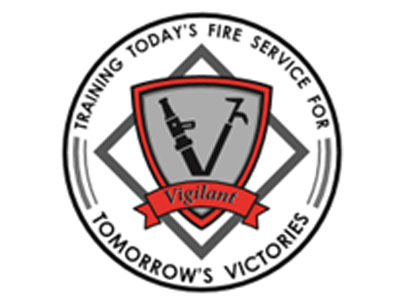 |
Hazardous Materials Spill Evolution #961 (Instructor Guide) |
1.00 |
This is the instructor guide for the Hazardous Materials Spill Evolution. This course will prepare the instructor to present and conduct this training session to an audience of firefighters. Course set-up requirements are described along with identification of key points and instruction for the demonstration and performance of the skill requirement of this training. |


























